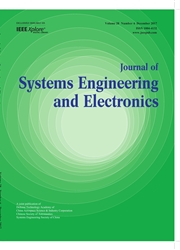

 中文摘要:
中文摘要:
The active contour model based on local image fitting(LIF) energy is an effective method to deal with intensity inhomogeneities, but it always conflicts with the local minimum problem because LIF has a nonconvex energy function form. At the same time, the parameters of LIF are hard to be chosen for better performance. A global minimization of the adaptive LIF energy model is proposed. The regularized length term which constrains the zero level set is introduced to improve the accuracy of the boundaries, and a global minimization of the active contour model is presented. In addition, based on the statistical information of the intensity histogram, the standard deviation σ with respect to the truncated Gaussian window is automatically computed according to images. Consequently, the proposed method improves the performance and adaptivity to deal with the intensity inhomogeneities. Experimental results for synthetic and real images show desirable performance and efficiency of the proposed method.
 英文摘要:
英文摘要:
The active contour model based on local image fitting (LIF) energy is an effective method to deal with intensity inhomo- geneities, but it always conflicts with the local minimum problem because LIF has a nonconvex energy function form. At the same time, the parameters of LIF are hard to be chosen for better per- formance. A global minimization of the adaptive LIF energy model is proposed. The regularized length term which constrains the zero level set is introduced to improve the accuracy of the bound- aries, and a global minimization of the active contour model is presented, in addition, based on the statistical information of the intensity histogram, the standard deviation σ with respect to the truncated Gaussian window is automatically computed according to images. Consequently, the proposed method improves the performance and adaptivity to deal with the intensity inhomo- geneities. Experimental results for synthetic and real images show desirable performance and efficiency of the proposed method.
 同期刊论文项目
同期刊论文项目
 同项目期刊论文
同项目期刊论文
 期刊信息
期刊信息
